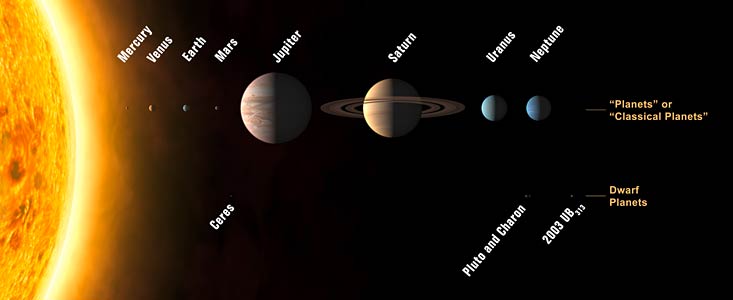- News
- Science
- Scientific Bodies
- Divisions
- Commissions
- Commission A1 Structure
- Commission A2 Structure
- Commission A3 Structure
- Commission A4 Structure
- Commission B1 Structure
- Commission B2 Structure
- Commission B3 Structure
- Commission B4 Structure
- Commission B5 Structure
- Commission B6 Structure
- Commission B7 Structure
- Commission C1 Structure
- Commission C2 Structure
- Commission C3 Structure
- Commission C4 Structure
- Commission D1 Structure
- Commission E1 Structure
- Commission E2 Structure
- Commission E3 Structure
- Commission E4 Structure
- Commission F1 Structure
- Commission F2 Structure
- Commission F3 Structure
- Commission F4 Structure
- Commission G1 Structure
- Commission G2 Structure
- Commission G3 Structure
- Commission G4 Structure
- Commission G5 Structure
- Commission H1 Structure
- Commission H2 Structure
- Commission H3 Structure
- Commission H4 Structure
- Commission J1 Structure
- Commission J2 Structure
- Commission J3 Structure
- Commission X1 Structure
- Commission X2 Structure
- Past Commission Organising Committees
- Working Groups
- Centres
- Scientific Meetings
- Rules & Guidelines
- General Assemblies
- Meeting Proposals
- Future IAU Meetings
- General Assemblies
- EC Meetings
- Officers' Meetings
- Regional Meetings
- Symposia
- Focus Meetings
- Institutional Meetings
- IAU Offices Meetings
- IAU-Sponsored Meetings
- Letters of Intent submitted for 2024
- Letters of Intent submitted for 2023
- Letters of Intent submitted for 2022
- Letters of Intent submitted for 2021
- Letters of Intent submitted for 2020
- Past IAU Meetings
- Templates
- Other Meetings
- Grants & Prizes
- Scientific Bodies
- Publications
- IAU Publications
- IAU Strategic Plan
- Symposia
- WGSBN Bulletins
- Regional Meetings
- Information Bulletins/Catalyst
- E-Newsletters
- Focus Meetings
- Transactions A
- Transactions B
- Related Publications
- GA Newspapers
- CAPjournal
- IAU Books
- Brochures
- IAU Offices
- WG Reports
- Commission Reports
- Division Reports
- Past IAU Publications
- Rules, Guidelines and Instructions for Proceedings
- Publishers
- IAU Publications
- Administration
- About the IAU
- Statutes & Rules
- IAU Policies
- IAU Executive Bodies
- IAU Secretariat
- Resolutions
- Members Administration
- Administrative Dates & Deadlines
- International Organisations Relations
- Donate to the IAU
- Training in Astronomy
- Astronomy for Education
- Astronomy for Development
- Astronomy for the Public
- Office for Astronomy Outreach
- FAQ
- Themes
- Satellite Constellations
- Astronomy in Everyday Life
- How to Report a Discovery
- Careers in Astronomy
- Defining our Place in the Cosmos
- The Constellations
- Light Pollution
- Measuring the Universe
- Near Earth Objects
- How to Participate in Astronomy Research
- Naming of Astronomical Objects
- Naming of Exoplanets
- Buying Star Names
- Naming Stars
- Pluto and the Solar System
- IAU Member Statistics
- Our Moon: the Moon
- Meteors & Meteorites: The IAU Definitions of Meteor Terms
- UNESCO-IAU Portal to the Heritage of Astronomy
- Social Media
- Past Events
- Call for Online Resources
- Astronomy@Home Awards
- Contact
iau0603 — Press Release

24 August 2006, Prague
IAU 2006 General Assembly: Result of the IAU Resolution votes
The first half of the Closing Ceremony of the 2006 International Astronomical Union (IAU) General Assembly has just concluded. The results of the Resolution votes are outlined here.
It is official: The 26th General Assembly for the International Astronomical Union was an astounding success! More than 2500 astronomers participated in six Symposia, 17 Joint Discussions, seven Special Sessions and four Special Sessions. New science results were vigorously discussed, new international collaborations were initiated, plans for future facilities put forward and much more.
In addition to all the exciting astronomy discussed at the General Assembly, six IAU Resolutions were also passed at the Closing Ceremony of the General Assembly:
- Resolution 1 for GA-XXVI : "Precession Theory and Definition of the Ecliptic"
- Resolution 2 for GA-XXVI: "Supplement to the IAU 2000 Resolutions on reference systems"
- Resolution 3 for GA-XXVI: "Re-definition of Barycentric Dynamical Time, TDB"
- Resolution 4 for GA-XXVI: "Endorsement of the Washington Charter for Communicating Astronomy with the Public"
- Resolution 5A: "Definition of ‘planet' "
- Resolution 6A: "Definition of Pluto-class objects"
The IAU members gathered at the 2006 General Assembly agreed that a "planet" is defined as a celestial body that (a) is in orbit around the Sun, (b) has sufficient mass for its self-gravity to overcome rigid body forces so that it assumes a hydrostatic equilibrium (nearly round) shape, and (c) has cleared the neighbourhood around its orbit.
This means that the Solar System consists of eight "planets" Mercury, Venus, Earth, Mars, Jupiter, Saturn, Uranus and Neptune. A new distinct class of objects called "dwarf planets" was also decided. It was agreed that "planets" and "dwarf planets" are two distinct classes of objects. The first members of the "dwarf planet" category are Ceres, Pluto and 2003 UB313 (temporary name). More "dwarf planets" are expected to be announced by the IAU in the coming months and years. Currently a dozen candidate "dwarf planets" are listed on IAU's "dwarf planet" watchlist, which keeps changing as new objects are found and the physics of the existing candidates becomes better known.
The "dwarf planet" Pluto is recognised as an important proto-type of a new class of trans-Neptunian objects. The IAU will set up a process to name these objects.
Results:
Resolution 5A: "Definition of Planet" was not counted but was passed with a great majority.
Resolution 5B: "Definition of Classical Planet" had 91 votes in favour, but many more against so there was no count.
Resolution 6A: "Definition of Pluto-class objects" was passed with 237 votes in favour, 157 against and 17 abstentions.
Resolution 6B: "Definition of Plutonian Objects" had 183 votes in favour and 186 votes against.
Below are the planet definition Resolutions that were passed.
Notes for editors
A press conference about the Closing Ceremony of the General Assembly, including the results of the planet-definition vote, will be held at 18:00, in Meeting Room 3.3 of the Prague Congress Center. (It will NOT be possible for journalists to ring in to this conference: they must be there in person.)
The panel for the press conference will be:
- Ron Ekers (outgoing IAU President)
- Catherine Cesarsky (incoming IAU President, Member of the Planet Definition Committee)
- Jan Palous (Chair of the National Organising Committee)
- Richard Binzel (Member of the Planet Definition Committee)
- Karel van der Hucht (incoming Secretary General)
This press conference will conclude around 18:30 CEST.
The IAU is the international astronomical organisation that brings together distinguished astronomers from all nations of the world. Its mission is to promote and safeguard the science of astronomy in all its aspects through international cooperation. Founded in 1919, the IAU is the world's largest professional body for astronomers. The IAU General Assembly is held every three years and is one of the largest and most diverse meetings on the astronomical community's calendar.
Contacts
Following the vote, some of the members of the planet definition committee will be available for interviews (after the final vote):
Richard Binzel
Member of the Planet Definition Committee
Prague Conference Center, Meeting Room 3.1
Tel: +420-261-177-110
Cell: +420-776-806-297 (during the General Assembly)
Junichi Watanabe
Member of the Planet Definition Committee
Prague Conference Center, Meeting Room 3.3
Tel: +420-261-177-081
Cell: +420-776-806-265 (during the General Assembly)
Iwan Williams
President, IAU Division III Planetary Systems Sciences
Prague Conference Center, Meeting Room 244
Tel: +420-261-177-064
Cell: +420-776-157-769 (during the General Assembly)
Owen Gingerich
Chair of the IAU Planet Definition Committee
Tel: via the Press Room +420-261-177-075
Professor Ron Ekers
IAU President
Tel: via the Press Room +420-261-177-075
Catherine Cesarsky
IAU President-Elect and member of the Planet Definition Committee
Tel: via the Press Room +420-261-177-075
PIO contact
Lars Lindberg Christensen
IAU Press Officer
IAU GA 2006 Press office, Meeting Room 3.2
Prague Congress Center
Tel: +420-261-177-075/+420-261-222-130
Cellular: +49-173-3872-621
E-mail: lars@eso.org
Links
- Programme for the Closing Ceremony: http://www.astronomy2006.com/second-session-and-closing-ceremony.php
- Live public webcast of the Closing Ceremony: http://astronomy2006.com/tv/
- Live press webcast of the Closing Ceremony (press only, please do not distribute):http://www.astronomy2006.com/tv-press
- The IAU Web page: http://www.iau.org
- IAU News during the 2006 General Assembly: http://www.iau2006.org
- IAU General Assembly: http://www.astronomy2006.com
- Free registration for the media: http://www.astronomy2006.com/media-accreditation.php
RESOLUTIONS
Resolution 5A is the principal definition for the IAU usage of "planet" and related terms.
Resolution 6A creates for IAU usage a new class of objects, for which Pluto is the prototype. The IAU will set up a process to name these objects.
IAU Resolution: Definition of a "Planet" in the Solar System
Contemporary observations are changing our understanding of planetary systems, and it is important that our nomenclature for objects reflect our current understanding. This applies, in particular, to the designation "planets". The word "planet" originally described "wanderers" that were known only as moving lights in the sky. Recent discoveries lead us to create a new definition, which we can make using currently available scientific information.
RESOLUTION 5A
The IAU therefore resolves that planets and other bodies in our Solar System, except satellites, be defined into three distinct categories in the following way:
(1) A "planet" [1] is a celestial body that (a) is in orbit around the Sun, (b) has sufficient mass for its self-gravity to overcome rigid body forces so that it assumes a hydrostatic equilibrium (nearly round) shape, and (c) has cleared the neighbourhood around its orbit.
(2) A "dwarf planet" is a celestial body that (a) is in orbit around the Sun, (b) has sufficient mass for its self-gravity to overcome rigid body forces so that it assumes a hydrostatic equilibrium (nearly round) shape [2], (c) has not cleared the neighbourhood around its orbit, and
(d) is not a satellite.
(3) All other objects [3], except satellites, orbiting the Sun shall be referred to collectively as "Small Solar-System Bodies".
IAU Resolution: Pluto
RESOLUTION 6A
The IAU further resolves:
Pluto is a "dwarf planet" by the above definition and is recognized as the prototype of a new category of trans-Neptunian objects.
[1] The eight planets are: Mercury, Venus, Earth, Mars, Jupiter, Saturn, Uranus, and Neptune.
[2] An IAU process will be established to assign borderline objects into either dwarf planet and other categories.
[3] These currently include most of the Solar System asteroids, most Trans-Neptunian Objects (TNOs), comets, and other small bodies.






